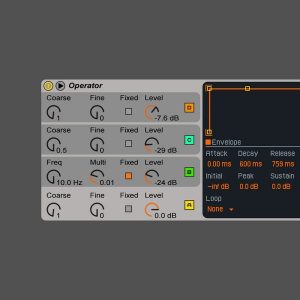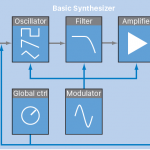The different kinds of synthesis: Additive
Last week we covered the process of subtracting frequencies from our signal to reach our final sound output. This week we’ll cover the process of additive synthesis or in other words adding/stacking frequencies one on top of the other to achieve our desired sound.
Similar to the synth architecture described in our last article, the additive layout also shares a wavetable generator, a filter, an amp envelope, and an LFO at the very least.
The difference here is that instead of subtracting from the overall signal, we’re stacking different waveforms one on top of another and adjusting the individual volumes of each wave to produce our over all signal.
This signal is then passed through the filter and the amp envelopes and optionally modified with an LFO.
Detunining the individual waveforms from one another, gives the overall signal a wider a feel, much like the signal is smeared with a chorus effect.
The chorus when applied to the signal however, sounds slightly divergent.
A prime example of a soft synth displaying this type of synthesis is Ableton’s stock plugin – Operator.

Operator in it’s essence however is a hybrid synth offering additive wavetable synthesis along with the capabilities of subtractive and fm synthesis.
At the heart of it however, operator acts as an additive synth with subtractive capabilities. Experiment with operator in your next project, and if you have any questions pertaining to sound design and music production please feel free to get in touch with us at -https://whrstudios.com/contact/




